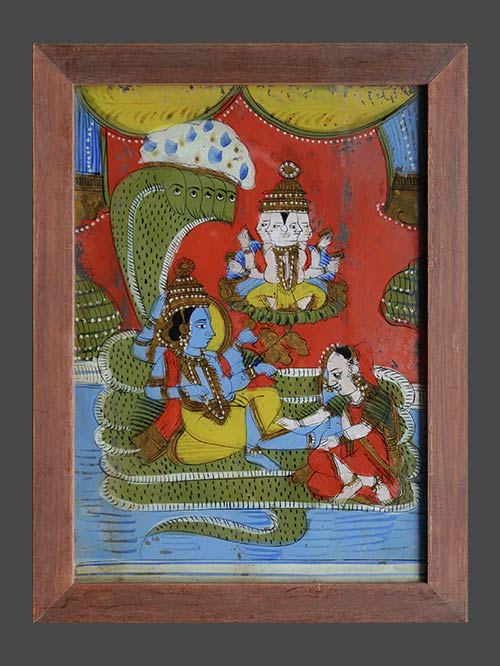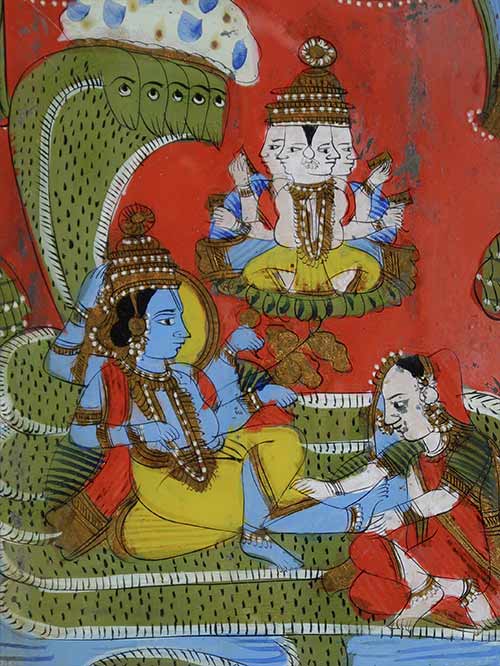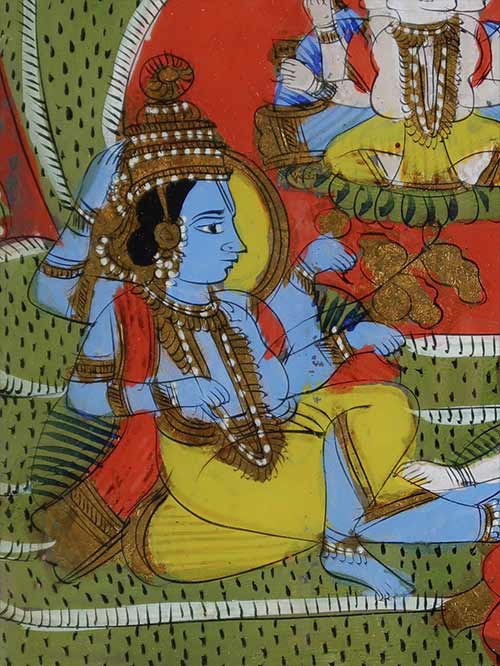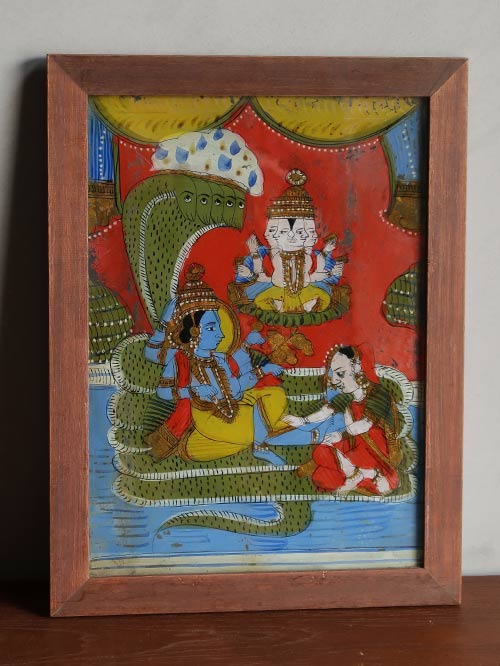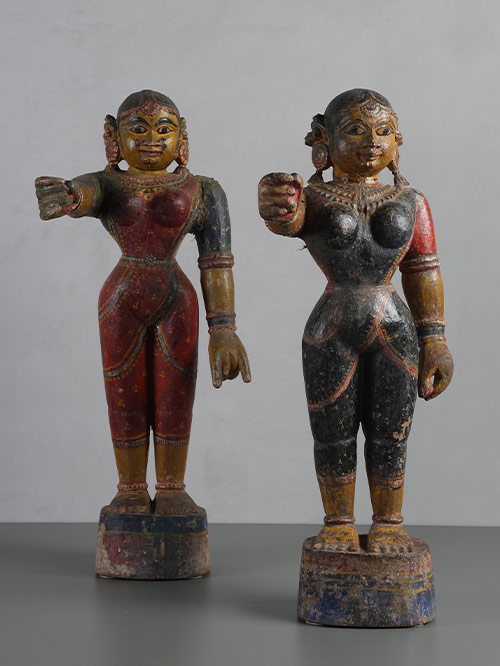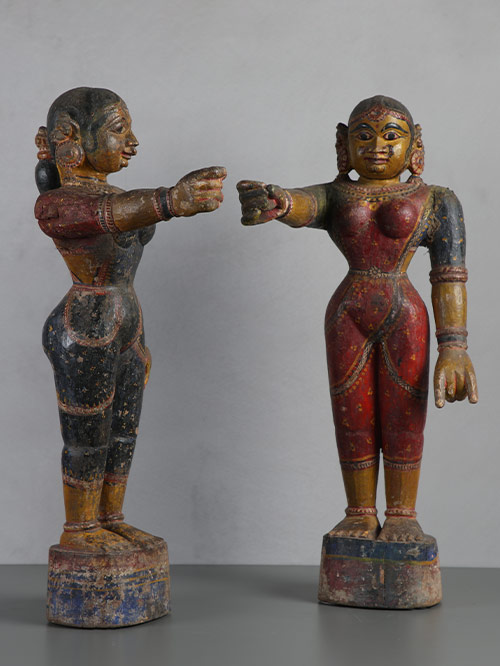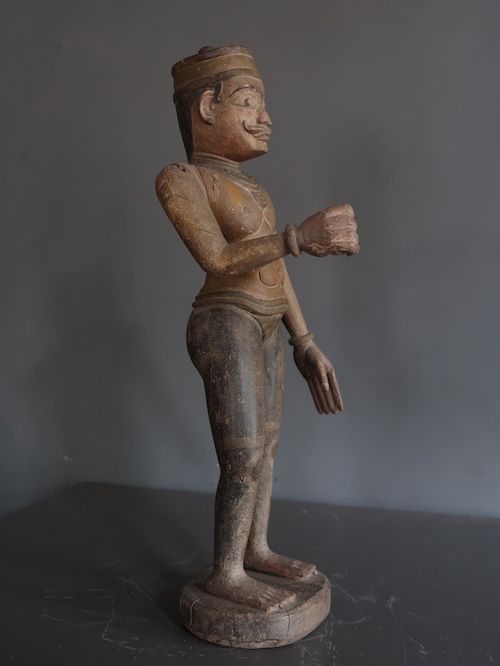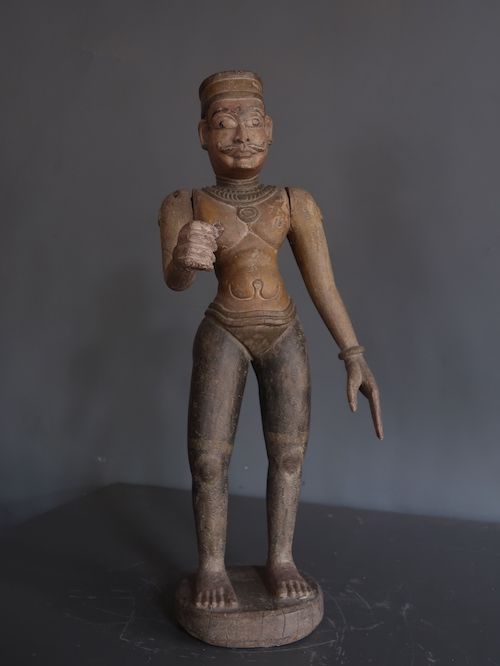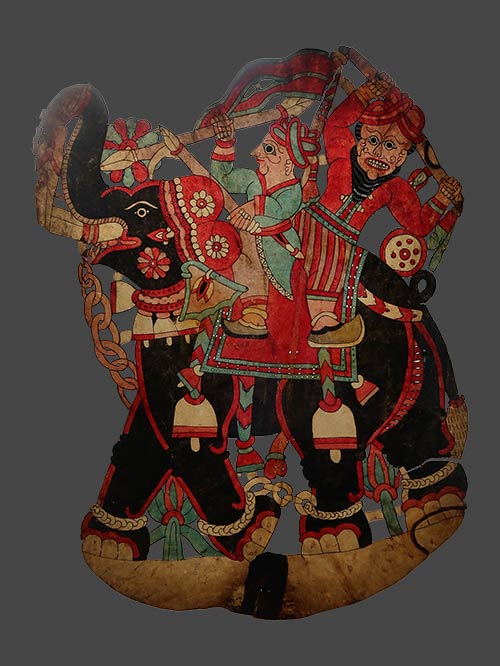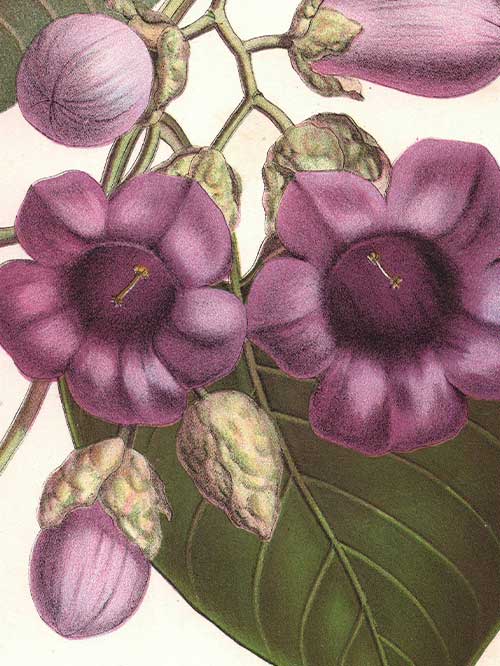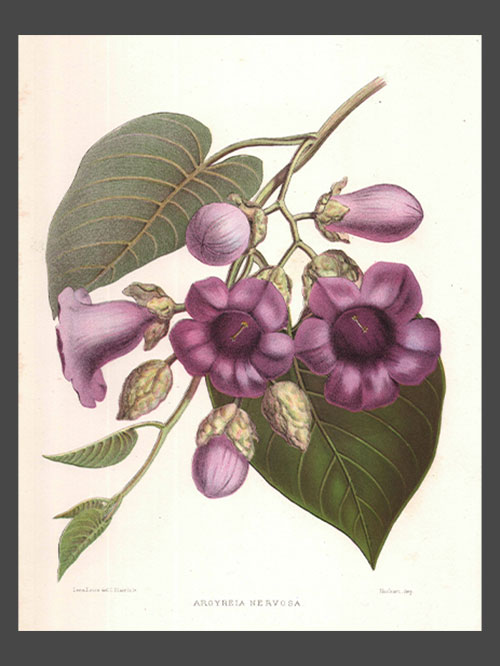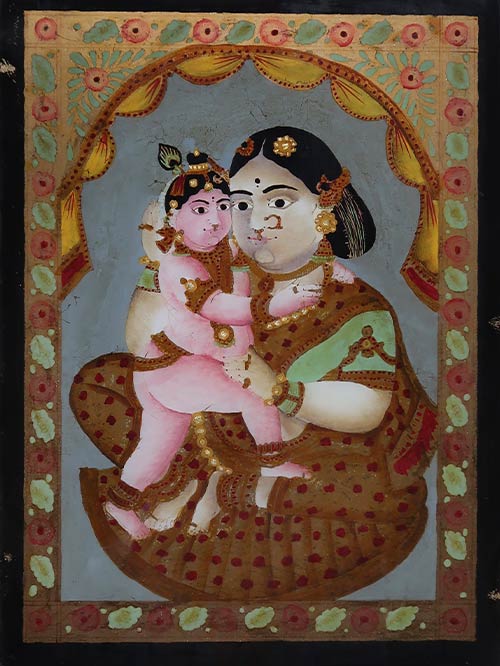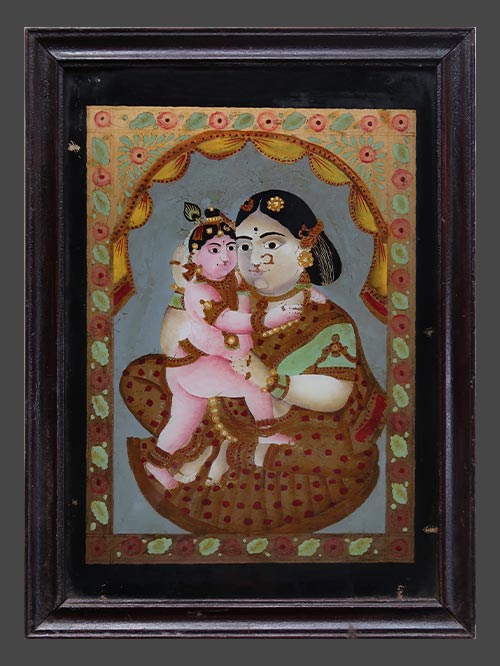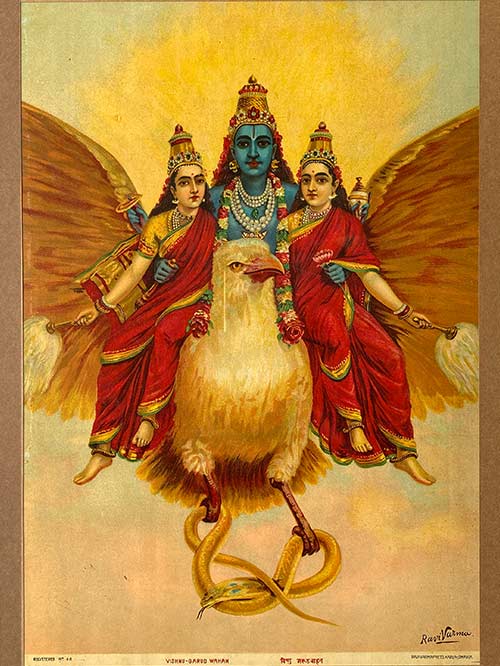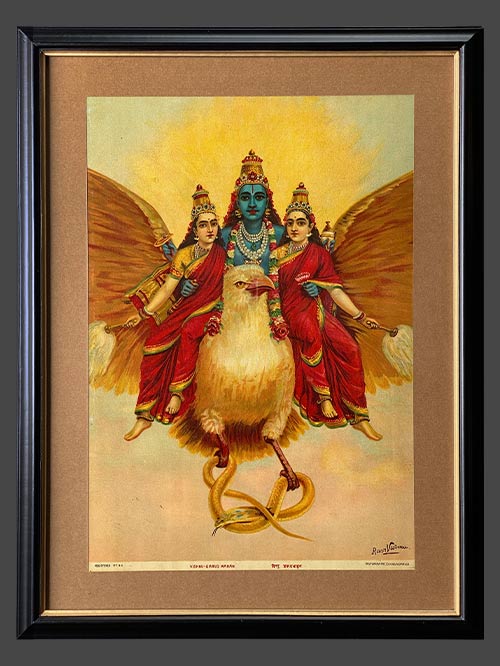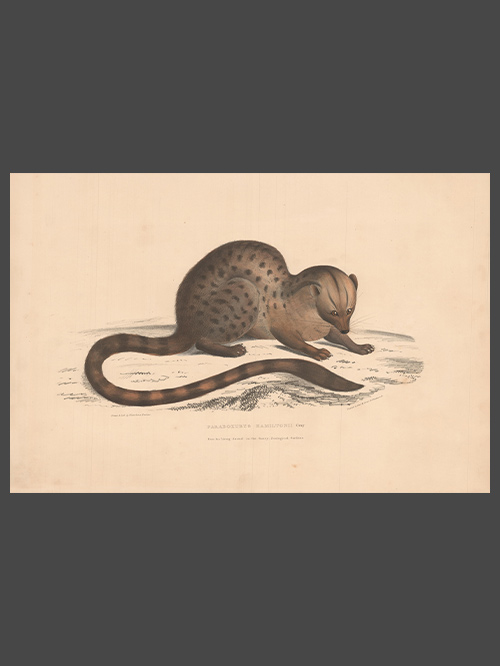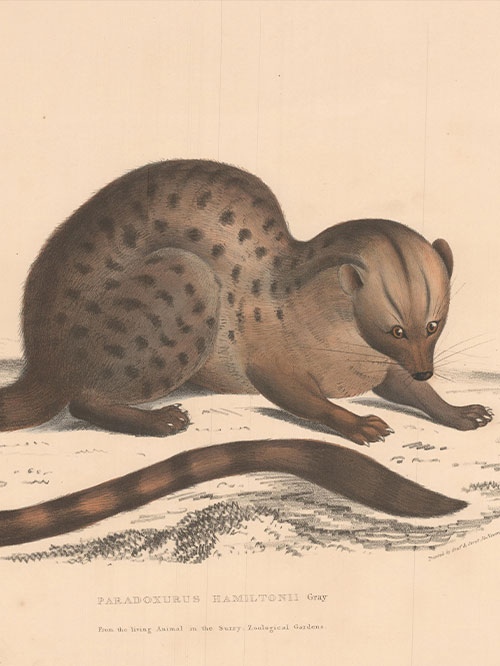Tanjore (South India)
reverse painting on glass
The blue-complexioned Vishnu reclines on the coils of the five-hooded serpent Ananta, also known as Shesha. From Vishnu’s navel sprouts a lotus on which the four-headed Brahma sits. Vishnu’s consorts Shri Devi sit pressing his feet. In this imagery, Vishnu is said to be in a state of deep sleep, known as “Yoganidra”, as he awaits the next cosmic dissolution. This imagery is a symbol of the cyclical nature of the universe and the god’s role in preserving it. According to Hindu cosmology, when the universe is in a state of chaos, Vishnu will wake up and take on an avatar to restore balance and order.
Reverse glass paintings were introduced into India the late 18th century from China by way of the China Trade. Indian artists adopted the technique of reverse glass painting partly on account of its novelty and also because it was a relatively inexpensive medium which could produce rich effects. The technique proved extremely popular and soon spread through western and southern India and even to former provincial Mughal capitals of Oudh, Murshidabad. In Tanjore a distinctive school of glass painting developed, with a rich colour and bold and defiant style. The subjects were clearly presented with a certain opulence and glamour.
Framed Size (cms): 40.5(H) x 30.5(W)
Framed Size (inches): 16(H) x 12(W)
Painting Size (cms): 34.3(H) x 24(W)
Painting Size (inches): 13.5(H) x 9.5(W)

